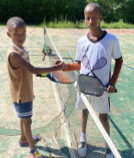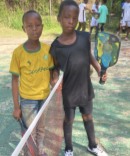Everything You and Your Teachers Need to Know about the Learning Brain
Faster downloadPublished Year: 2020

Language: en
Details: CC-BY 4.0 Collection Editors: Jessica Massonnie, Sabine Peters, Nienke Van Atteveldt, Stephan Vogel
Summary:
Children go to school to learn, and learning takes place in the brain. In the age period of formal schooling, a child’s brain is still undergoing major developmental changes. For these reasons, neuroscience (the study of the brain) and education are closely connected. Learning is possible because the brain is plastic: plasticity refers to the capacity of the brain to reorganize its structure and thereby change function and behavior.
But what exactly changes in the brain when we learn something new? What are optimal conditions for the brain to learn? Why do we also forget things? What developmental changes occur in the brain during childhood and adolescence, and how are these processes different or similar to the neural mechanisms of learning and memory?
Neuro-imaging research, or ‘brain scanning’, has accelerated our current understanding of brain development, learning, memory and other school-related skills such as reading and math but also creativity, metacognition and learning-related emotions and anxieties. But what do these brain scanning techniques actually measure? What kind of questions can we address with neuro-imaging, and what are the limitations?
In this Collection, we will provide an accessible overview of the current state-of-the-art insights into the mechanisms of brain development, learning and memory. The collection will help children understand how their brains learn and develop, and how these processes are shaped by their environment and their own efforts. Moreover, we will discuss why it is important that their teachers and other educational practitioners know about the brain and neuroscience methods. Finally, we will also explain what happens if wrong ideas about the brain circulate, or the correct knowledge is misinterpreted. Neuromyths such as ‘we only use 10 percent of our brain’ are persistent, but important to counter with explaining why they are false, and what is true instead.







